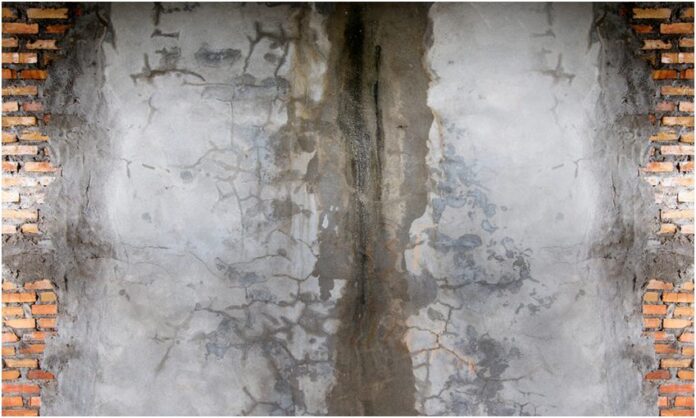“Slab” refers to your home’s foundation, made of concrete. It’s usual for concrete to develop cracks and holes as it ages because it’s connected to various pipes, including water, sewer, and gas lines. It’s possible that the water in the pipe positioned underneath the slab’s foundation develops cracks or holes or is broken. As a result, the surrounding soil will absorb the water, and the ground will appear shaky.
Soil that is too wet or unstable can weaken the concrete slab foundation, causing it to degrade. The foundation of your property may begin to shift due to the leak, causing the floors and walls of your home to crack or possibly collapse. Slab leaks are caused by a few factors, such as the following:
There is a wide range of possible causes when a slab leak occurs: Here are the top 5 causes of slab leaks and how you can fix them:
Make sure to understand these causes in the best possible way so that you know how they can be fixed seamlessly.
Earthquakes
The vibrations might seriously damage pipelines under your property during an earthquake. A slab leak occurs when the joints between the pipes degrade, causing the tiles to fall apart. The sound of water running from beneath the slab is a common leak indication. This can be an early sign that a hot water pipe leak is occurring in your home. Weeds and mildew begin to grow along with the leak’s progression and expansion.
Highly alkaline water
The availability varies vastly regarding the sort of water available in your area. Still, it is highly acidic if you have hard water, with an average pH of 1 to 4. The acidity of the water wears down the pipelines over time. Several houses have installed water softeners to remove magnesium and calcium from the water to solve this problem. Acidic water can be detected by looking for stains of blue and green in your bathroom, kitchen sink, shower, or toilet.
Copper pipes that have deteriorated
Slab leaks are more common in homes that have been around for a while since copper pipes were used during construction. Cipro-nickel pipes corrode quickly when exposed to water that includes large concentrations of salts dissolved in it, acidic water with a pH below 7.0, or even moisture with significant concentrations of liquefied oxygen. However, corrosion can occur even when the water’s acidity level exceeds 8. Corrosion and breaks in the pipes buried under a concrete slab might lead to a severe leak.
Abrasion
You may notice the pipes in your foundation scraping against your property’s concrete slab when water moves through them, which can be annoying. In addition, the lines can come into contact with gravel, dirt, and other pipes. Damage to the outside of your pipes occurs as soon as a pipe begins to rub against the concrete foundation, and water will seep into your concrete foundation if your pipe walls are too thin.
Pressure in the Water
The pipes beneath your slab foundation may break or collapse if the water pressure is too high. Signs such as creaking noises and leaky faucets are common indicators of increased water pressure. Using a gauge like this, you can determine the PSI of your water pipes.
The average water pressure rating is between 40 and 80 pounds per square inch, depending on where you live. High or underpowered water pressure can damage or rupture underground piping and cause leaks. Installing a water pressure-reducing valve on your property to safeguard your pipes is a straightforward approach to avoid problems of this nature in the future.
Repairing a slab leak with the best solutions possible
The following are the most frequent ways for Slab Leak Repair if they have already appeared in your home:
Re–piping
It’s possible that removing the concrete from your foundation and installing a new pipe to replace the broken one will cost you more money than you expected. Slab leaks are easier and less expensive to repair if a new pipe is run outside the concrete foundation or up through the attic. Aside from the fact that you won’t have to spend time and money removing the concrete and destroying your beautiful floors, this choice provides far better access to the new pipeline.
Drilling a hole in the pipe will allow you to replace the failed section.
It is easier to patch a tiny leak by drilling a hole through the concrete slab and replacing the damaged portion of the pipe with a new one rather than removing the entire slab and replacing it with a new line. If you don’t mind drilling through your hardwood or tile floor to get at the concrete slab, this is a viable choice.
Installation of pipe–lining
No cutting or drilling is required; a thin layer of epoxy coating is all that is needed on the inside of your galvanized copper or steel pipes. After the epoxy is inserted, it will harden and fill up any holes or cracks that may have formed over time in your lines. Slab leaks can be repaired with this less invasive and more affordable technique.
A pipe’s bursting or splitting
Rather than using epoxy to line the inside of the pipes, a new pipeline is installed over the damaged pre-install pipe, which has a bursting head slightly larger in diameter than the epoxy-lined interior of the pipes. Pushing or tugging the damaged pipe destroys or retracts it. As a non-invasive method, this technique is utilized to repair pipes that have been severely damaged.
Conclusion
There can be tens of thousands of dollars in repair costs, and many homeowners’ insurance policies do not provide any coverage. A thorough understanding of the warning indications of a slab leak and your alternatives for repairing and preventing it is critical for homeowners.







